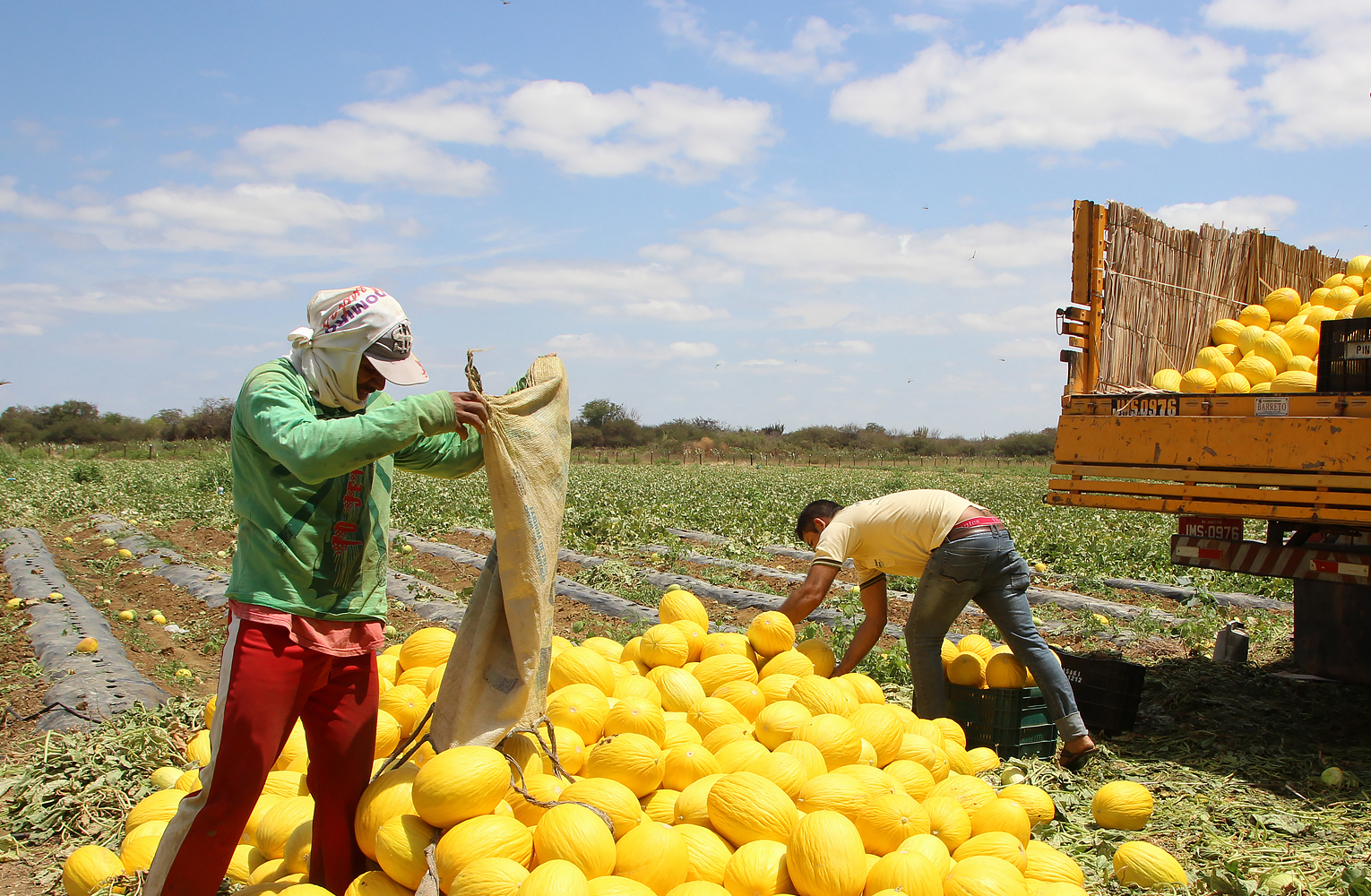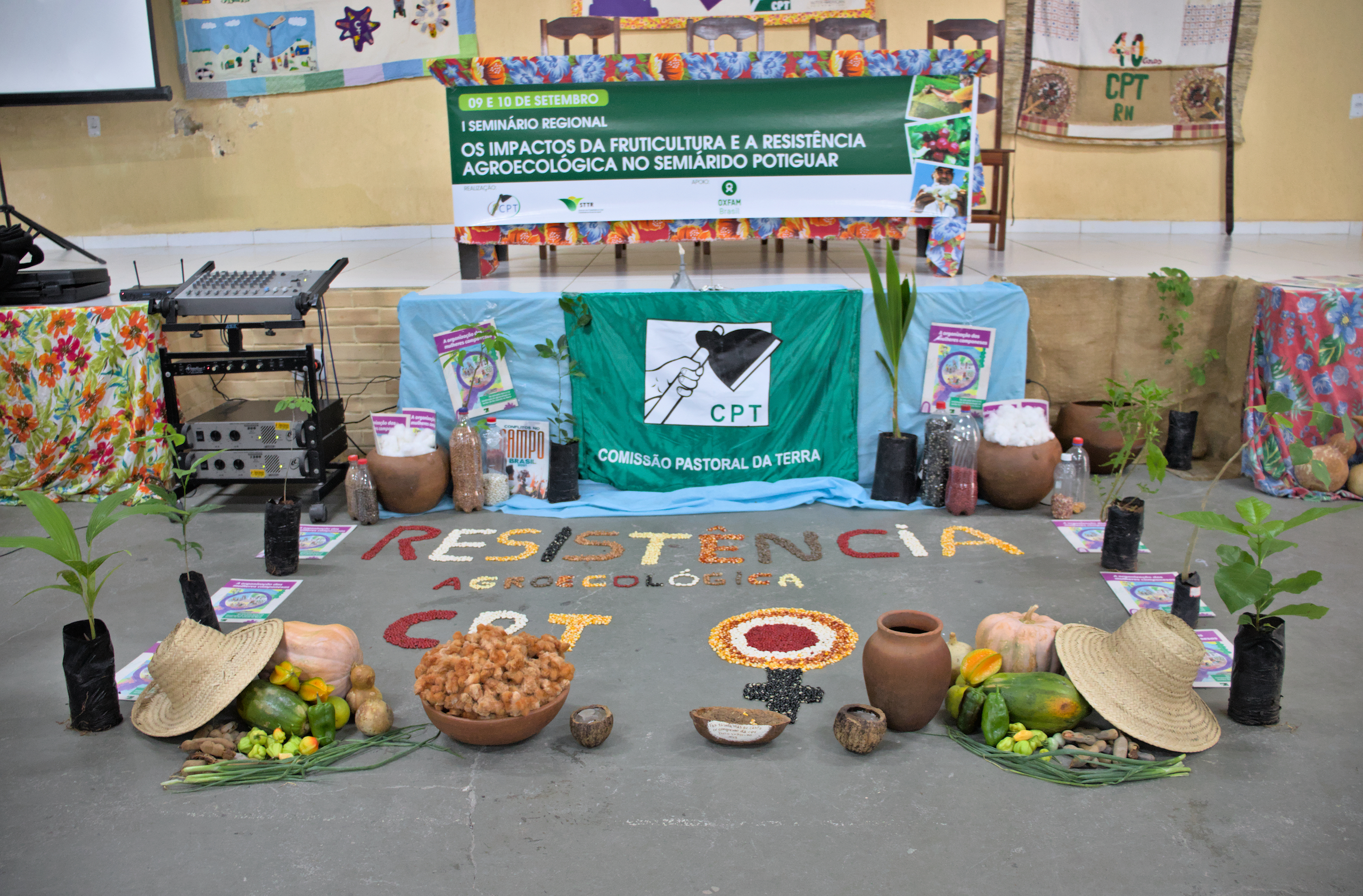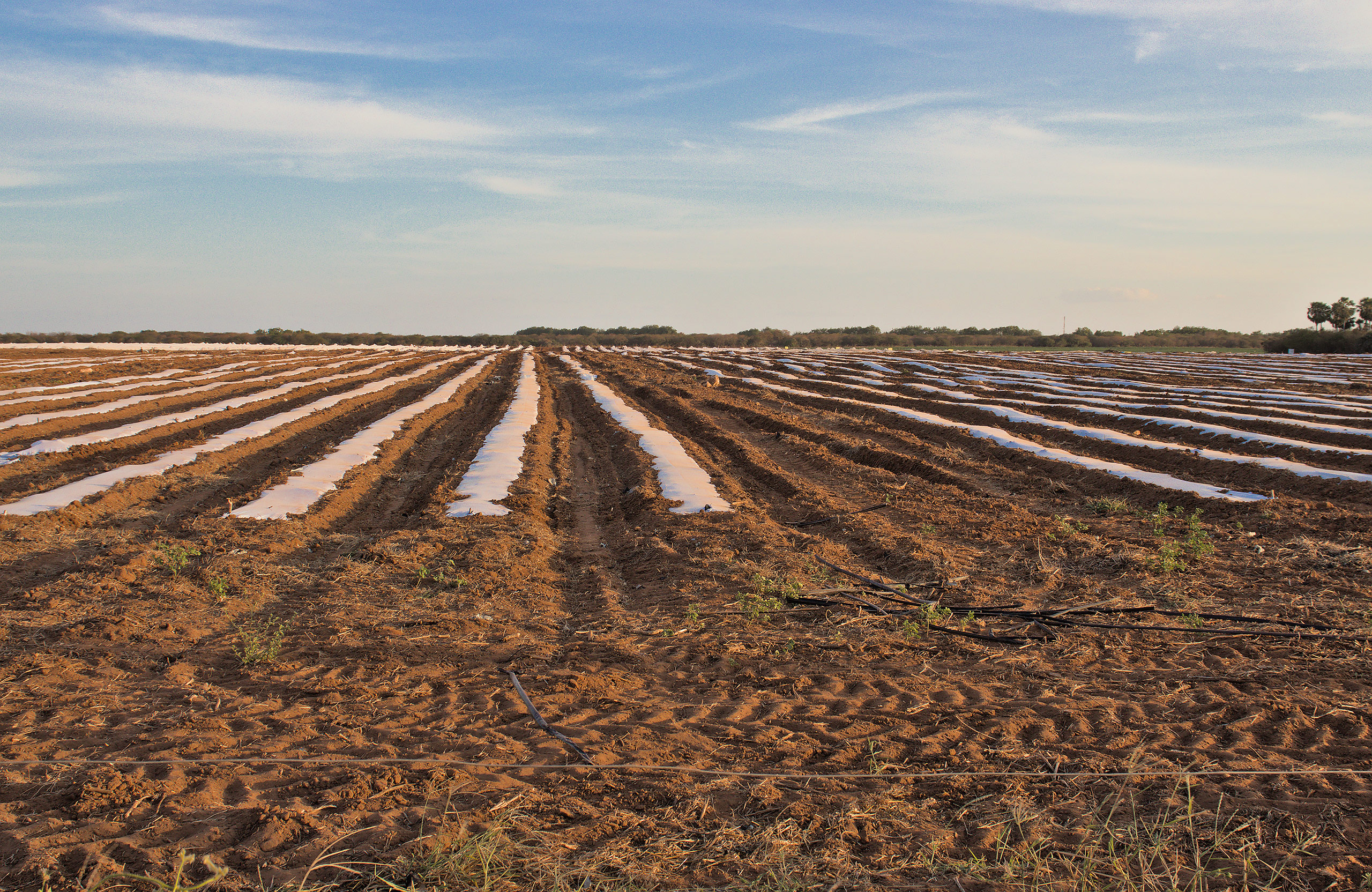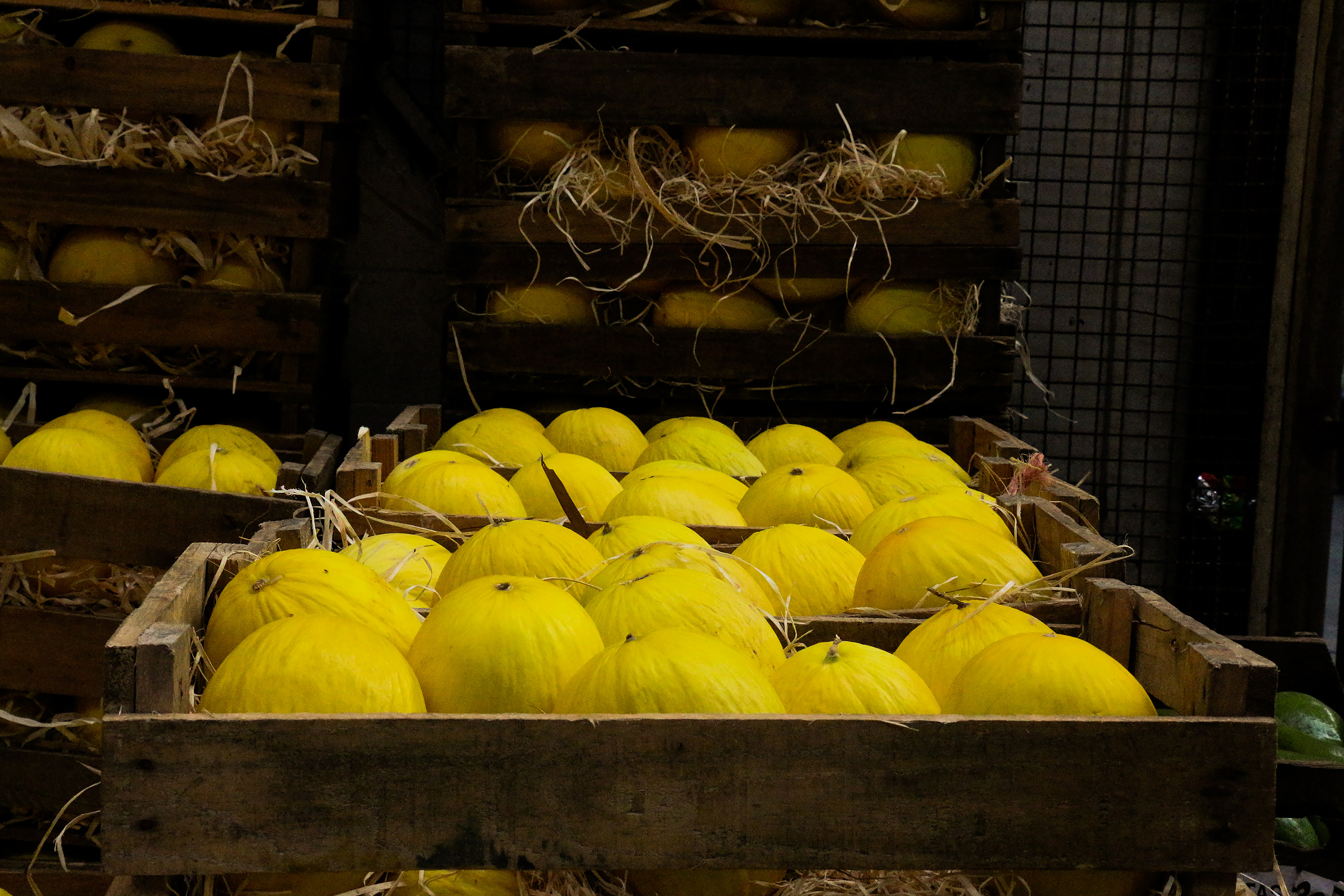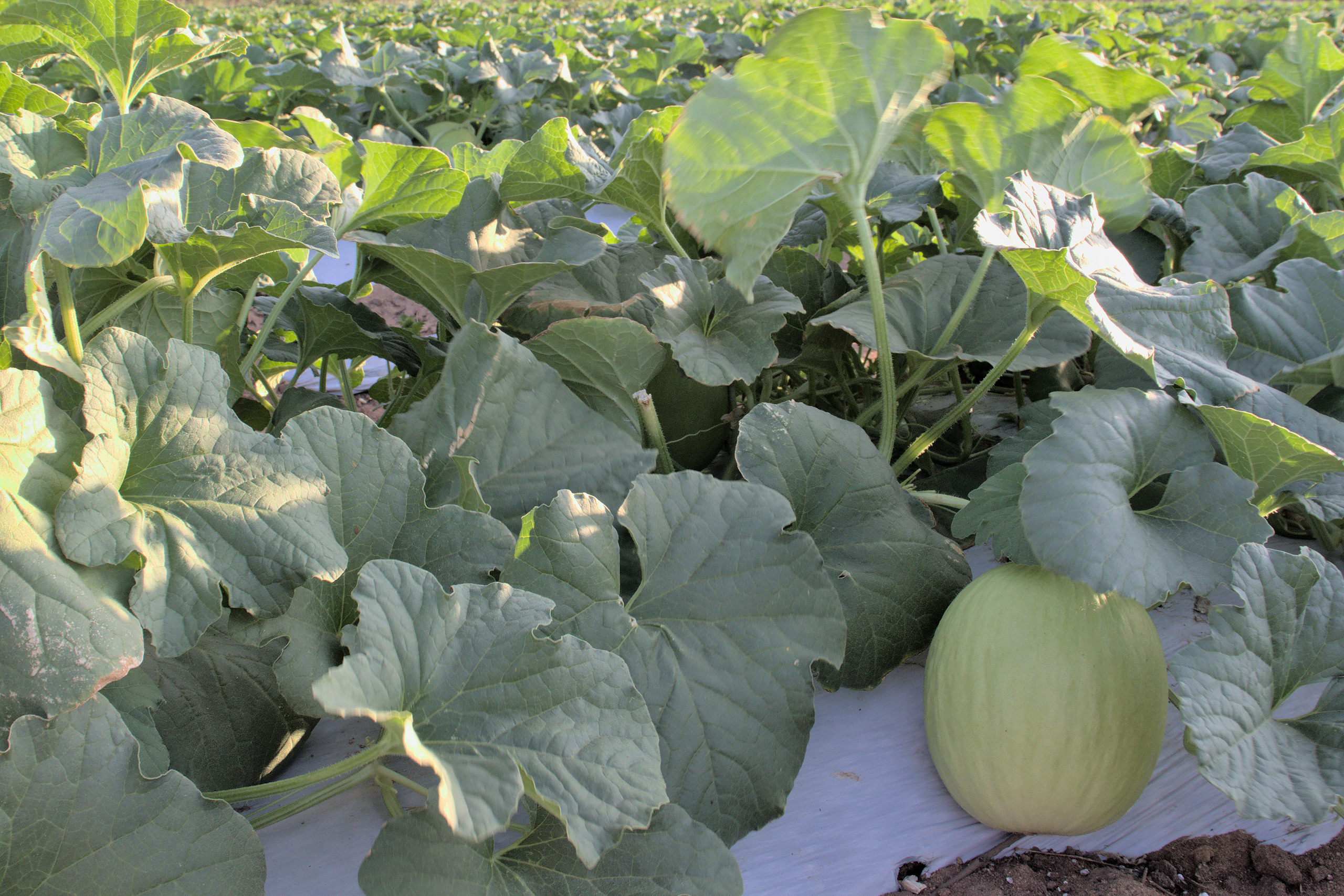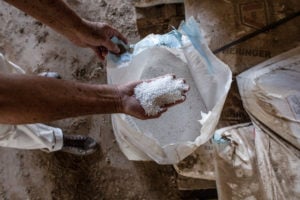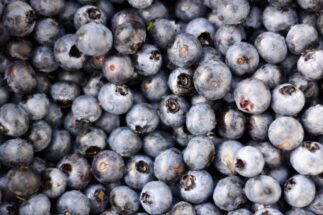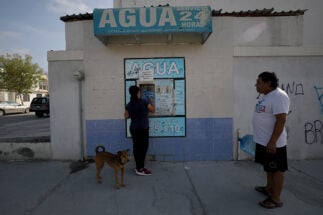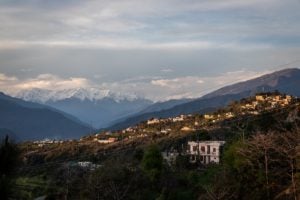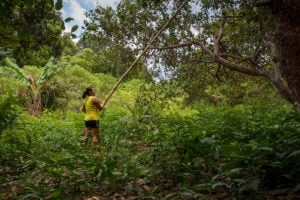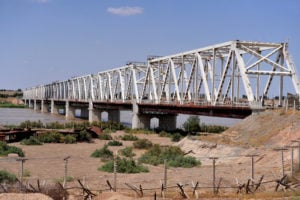Instead of the sweet taste of melon, it is bitterness that comes to mind as farmer Francisco Edilson Neto, 65, recalls his first experience with the fruit: “The melon managed to destroy the dreams of many people.”
Edilson was part of a group of about 100 farmers living and working in Apodi, a municipality in the state of Rio Grande do Norte, in Brazil’s north-east. Using agroecological approaches, they grew the famous red rice typical of the region, as well as beans, vegetables and some fruits. Everything was produced as a collective for the consumption of the families, and what was left over was sold in the municipality’s markets.
But here in the Chapada do Apodi, a fertile plateau that stretches across Rio Grande do Norte and neighbouring Ceará state, things began to change with the arrival of large melon producers in the late 1990s.
The family farmers also decided to invest in the fruit, hoping to increase their income. “The idea was to plant melons for export,” Edilson recalls. “Even back then, fruit farming for export was not a safe bet for small fish like us.” He tells us how the collective sought a bank loan to support this venture, a debt they would struggle to pay back and which caused irreconcilable divisions among the group.
At the time, agroecological approaches and community farming were seen as backward. “It hurt a lot when we saw this dream destroyed. But in the middle of this struggle, another struggle was born, and we emerged with a trade union,” says Edilson, formerly president of the Union of Rural Workers of Apodi.
We met Edilson at the union’s headquarters in September 2022. Peasants from the region had gathered for three days to discuss the impacts of export fruit farming in a region with its own traditions linked to agroecology and family production.
With greater availability of water than the Ceará side of the Chapada, Apodi and other nearby cities are becoming a battleground between fruit-growing agribusiness and peasant communities, and their opposing views on use of territory and natural resources. It is a dispute over ways of living and producing, and access to the most valuable asset in Brazil’s semi-arid Northeast region: water.
Brazilian melons arrive in China
In November 2019, far from the farms of the Northeast at the presidential palace in Brasília, Tereza Cristina, then agriculture minister, sealed a trade agreement considered “historic” for fruit exporters, under the gaze of Brazil’s then-president Jair Bolsonaro and China’s Xi Jinping.
That year, China agreed to allow imports of Brazilian melons, the first fresh fruit from the South American country to gain access to the Chinese market. The first shipment from Brazil arrived in Shanghai in September 2020.
China is the world’s largest melon producer and consumer, and has substantially increased its fruit imports in recent decades. Over the last two decades, it has also consolidated its position as Brazil’s main commercial partner.
Melons have been taking an increasing share in the Brazilian agricultural sector’s exports, rising in recent years to rank among the nation’s most exported fruits, second only to mangoes. The main destinations are the European Union, the United Kingdom and the United States, markets that are already consolidated for Brazilian fruit producers.
China’s entry into this market may yet add to the pressure on regions such as the Chapada do Apodi, potentially amplifying the impacts of a model that guarantees water for agribusiness, but brings increasing difficulties for traditional farming communities and small, agroecological farmers like Edilson.
‘Doubling’ melon production
If Brazil is to start to increase its supply of melon China, it will need to double the current 20,000 hectares of area dedicated to the crop, according to “conservative” estimates from Luiz Barcelos, a partner at Agrícola Famosa, the largest producer and exporter of melons in Brazil, and one of the largest in the world.
“China plants 430,000 hectares of melon a year, Brazil plants only 20,000 – that is, they plant twenty times more than us,” Barcelos said in an interview with the Brazilian Confederation of Agriculture and Livestock. “Very conservatively, I think that in the next five years we have conditions to double our melon planting.”
Following the agreement, Brazil exported around 200 tonnes of melon to China between 2019 and 2022, according to data from the Brazilian Ministry of Industry, Foreign Trade and Services. It is still a small volume, which has cooled in the face of logistical disruptions during the Covid-19 pandemic and the increase in the price of air and sea freight. Most of these exports have left Rio Grande do Norte by truck, heading for the São Paulo port of Santos, from which they are shipped to Shanghai.
As a leading company in the market, Agrícola Famosa could become an important supplier of melons to China. Today it serves the British, Dutch, German, Italian, Portuguese and Spanish markets.
It is not the only potential winner: there are other large companies, many backed by international capital, that supply melon and other fruit to foreign and domestic markets. They are mostly located in Rio Grande do Norte and Ceará, states that account for about 70% of all melons produced in Brazil. More than half of this production is for export.
Agrícola and other large fruit growers cultivate in the middle of the Caatinga, a territory adjoining the two states and a fertile land that extends to the coast of Ceará. Its hot climate, year-round sunshine and the lack of rain offer perfect conditions to produce fruit, and melons in particular.
Contrary to what meets the eye, there is an abundance of water in this biome – water found in underground reservoirs known as aquifers. The region’s melons are highly dependent on this resource: from planting the seedlings to harvest, one kilo of the fruit consumes around 200 litres of water.
The waters of the Jandaíra and Açu aquifers have almost been exhausted, primarily for the production of melon and watermelon, but also for papaya, banana and guava on a smaller scale.
Wells more than double in eight years
Founded in 1995 by Barcelos and business partners Carlos Porro, Agrícola today produces fruit on 30,000 hectares spread over 16 farms, an area six times larger than when operations started.
Of every ten melons produced by the company, seven are destined for the international market. Four hundred containers loaded with melons are dispatched every week. Agrícola Famosa describes itself as the country’s largest producer and distributor of melons and watermelons, and expanded its international operations in 2021 with the establishment of partnerships in Spain and the UK – the largest consumer of its melons.
But the company’s greatest expansion escapes the eye. In eight years, Agrícola Famosa has gone from operating four deep wells, between 400 and 800 metres deep, to 21 such borings, in order to supply its farms. The number of shallow wells, up to 400 metres deep, has more than doubled in that time, from 250 to 582 today, according to data made available by the company.
The company is among Ceará state’s largest consumers of water – alongside other large fruit companies. In 2022, the company obtained authorisation to use almost 10 million cubic metres of water, according to a calculation based on permits issued by the Ceará government, made by geographer Diego Gadelha, a researcher and professor at the Federal Institute of Ceará.
“There is a multi-territorialisation in the presence of fruit farming,” Gadelha says. The fruit companies, he adds, “follow the water”.
To put this use into perspective, 10 million cubic metres would be enough to supply the 244,000 inhabitants of the Chapada do Apodi municipalities with 110 litres of water per day, the minimum amount recommended for consumption and hygiene, according to the World Health Organisation.
Advances on aquifers
In 2012, Ceará began to experience a major period of drought that lasted for eight years, with the amount of water that left the aquifer much greater than that which recharged it, Gadelha explains. “So the aquifer has been showing a deficit year after year due to the expansion of production, of the planted area, and above all, superimposed on this, the drought period.”
On the Ceará side of the Chapada do Apodi, melon and other fruit have left a trail of desertification, land speculation, unemployment, and difficulties for farmers to access the water table. “There used to be 3,000 hectares of melon,” the researcher recalls. “This whole district used to swell because of fruit-growing, at harvest time there were 3,000 workers. But there was disorderly growth. The companies left and this district went bankrupt.”
Since then, large melon and watermelon monocultures have moved towards Rio Grande do Norte, where there are at least three dams, in addition to accessing the Jandaíra and Açu aquifers, the latter of which has greater water availability.
“The water from the Jandaíra limestone has a high salt content. It mixes with the water from the Açu sandstone, and becomes water suitable for melons and watermelons,” explains agronomist Josivan Barbosa, professor and former dean of the Federal Rural University of the Semi-arid Region. While the Jandaíra is closer to the surface, the Açu is about 1,000 metres deep and has fresh water, suitable for human consumption.
A treasure for the few who can access it. The greater the depth, the more expensive it becomes to prospect a well, something in the region of a few million reais. Accessing this water for irrigation use is not cheap either, as pumping depends on electricity.
It takes 35 days by ship to reach China, the fruit cannot stand thatJosivan Barbosa, agronomist
Josivan Barbosa says that expectations for exporting melons from this semi-arid region to China are still “more in the political field”.
“There is no water,” he says. “To justify the frequency of the shipments, you’d have to have another 10,000 hectares. That represents 50% more than the area planted today. There is no water for that. That’s one key point, and the other is logistics. It takes 35 days by ship. The fruit cannot stand it. We would have to have genetic material with a very long post-harvest shelf-life, of 40 to 45 days. We don’t yet have that.”
But water does not seem to be a concern for Agrícola. Last November, business figures from the fruit sector met with vice-president Geraldo Alckmin, before the new government had been formally inaugurated after the October elections. They were representing the newly created National Network of Irrigators, chaired by Barcelos, and Abrafrutas, an association that brings together the main fruit producers and exporters. On the agenda: an increase in irrigated areas, their so-called limits, and opening new markets.
No clear air
A long way from the air-conditioned offices where trade and diplomatic agreements are sown, and even further from export markets, 58-year-old Miguel* has been losing sleep over melons. This is not just a figure of speech: as harvest time approaches, there are sleepless nights in the settlement near Apodi where he and 40 other families live.
“At night we wake up with our noses burning. Mainly at the time when they apply pesticides,” says the farmer. “They spend the whole night bathing the crops. That’s when you start to feel this burning sensation in your nose,” He is a mature man with a creased face and grey hair. He looks at least ten years older than his age.
About six years ago, melon became a troublesome neighbour. It was during this same period that Brazil achieved, year after year, remarkable results in fruit exports. The crops came closer and closer to his property, where he raises goats, sheep and bees, as well as a small field for subsistence.
“That clear air that we used to have – lying on the porch and seeing that clear air – today, we no longer have that,” Miguel laments. “Instead of air, it feels like contaminated dust or poison.” Only two hundred metres separate the house where he lives and works from the melon fields of Agrícola Famosa.
Miguel also speaks with regret over the poor performance of the bees that he has managed for some years and which represent an important part of his income.
“The bees used to be very strong in the summer. Now winter comes, and the rains, and the bees are weak. To recover it takes a lot of work,” he says, estimating that, in the last year alone, beekeepers in his community lost about a third of their bees and honey production.
Miguel and practically all of the families in his settlement have relatives who work for Agrícola. Although the impacts of the proximity of the crops are intensely discussed, no one has the courage to expose themselves. For this reason, he only agreed to talk on the condition of anonymity.
At harvest peaks, 9,000 workers support Agrícola Famosa alone. This gives an idea of the economic – and therefore political – power that the company wields in rural towns where there is little or no job creation.
“The arrival of the companies has changed a lot,” Miguel says. “It has some positives, but almost all are negatives. The positive today is employment in our municipality. That is the only positive thing I see. But on the other hand, we are hit by a lot of things that are bad for our health and our community.”
The cases of Edilson and Miguel, and the advance of Agrícola melons, illustrate only some of the many impacts of large-scale fruit farming. Although the official discourse is that of development and the generation of employment and income, it has done little to alter the power structures of access to water and land in the region. At best, it has brought in new actors, while maintaining a great asymmetry between large and small agricultural producers.
Water follows the path of power
Brazil has been exporting melons for 40 years. During this period, the country has been through economic and political crises, a new currency emerged, fruit companies went bankrupt, buyer markets created new requirements, and irrigation technology and genetic improvement of the fruit saw great advances. Brazil consolidated itself in the global fruit market.
But the thinking of the rural economic elite has changed little since then, Josivan Barbosa says: “When you take the irrigated agriculture businessmen here, it is more or less the same thinking as the grain and meat businessmen. They have this impression that the rural worker doesn’t really need all this support that he gets today.”
Despite all the productive, economic and political rearrangement experienced in four decades, water in the semi-arid region continues to follow the path of economic power. Back then, Mossoró Agroindustrial, or Maísa – a once-thriving agro-industrial complex created in the 1960s with state incentives, subsidised credit, investments in infrastructure and irrigation projects, but which ultimately failed at the turn of the century – was already producing melons and other fruit with water from the Açu aquifer. The company had as many as 11 deep wells of 400 to 500 metres deep, thanks to the ease of obtaining credit from public banks and the fact that it had in its own specialists in soil drilling.
Today, this aquifer is the disputed water source that may sustain a potentially increased demand from China and elsewhere. But it is not the only one, with prospecting for new water resources for fruit production taking place in states such as Piauí and Maranhão. “The central question here,” Barbosa says, “is are we going to indiscriminately use this water that is for human consumption, are we going to use it for irrigation?”
O Joio e O Trigo contacted Agrícola Famosa for comment, but the company did not respond to their queries.
This article originally appeared on O Joio e O Trigo. This translated and edited version is republished with permission. Maíra Mathias also contributed to the report.
